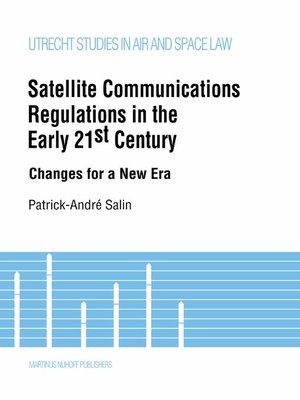Satellite Communications Regulations in the Early 21st Century
ebook ∣ Changes for a New Era
By Patrick-André Salin

Sign up to save your library
With an OverDrive account, you can save your favorite libraries for at-a-glance information about availability. Find out more about OverDrive accounts.
Find this title in Libby, the library reading app by OverDrive.



Search for a digital library with this title
Title found at these libraries:
| Library Name | Distance |
|---|---|
| Loading... |
This volume is about the sweeping technical and regulatory changes which have moulded the new regulatory framework of space communications. WARC-92 introduced the LEO systems, WRC-5 confirmed the access of large international corporations to negotiating tables with member state representatives, WRC-97 saw the first exchanges of rounds between North America and Western Europe in the planetary quest for new business markets, and WRC- 2000 saw the introduction of new technologies that will revolutionize space communications: satellite navigation services and new 3G mobile services, within a context of accelerated commercialization of global telecommunications and many institutional, legal and regulatory questions that remain to be settled. The coming conferences of the next century promise to be challenging. The legal and institutional process, which charters such unprecedented technical revolution, is still primarily in the domain of international law experts. Yet, several other legal specialities also tackle what space-based communications are: trade, air navigation, culture, education, etc., in intimate contact with legitimate profitmaking concerns and stratigic interest considerations.
This volume is conceptually divided into two parts but actually has three parts. It is organised around the traditional distinction between internationals satellite regulations (Part One) and regional satellite regulations; while this second level deals with North American and Western European regulations (Parts Two and Three). The outcome of this research is, first, to present the evolution of the regulatory framework of space-based communications, second, to underline the mounting importance of administrative regulations which tend to be granted a de facto status of standard laws and, third, to draw the attention of the public consciousness to the win-lose type of trans-Atlantic competition that is taking place on the planetary stage, tht should change into a win-win scenario in the end.
Such a broad fresco had never been presented before in such a compact format to a worldwide community of readers. This book is a store-house of reference information for all who are actively involved in satellite regulations, in both the academic and the professional community, as well as those in the general public who are interested in international affairs.







